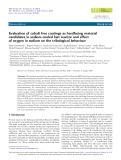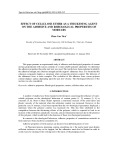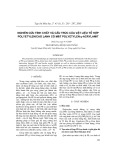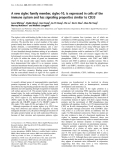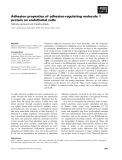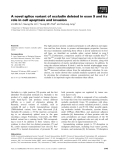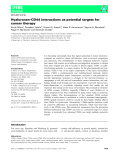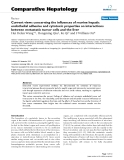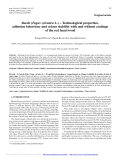
Adhesive properties
-
The feedback produced by operating Sodium-cooled Fast Reactors (SFRs) has shown the importance of material tribological properties. Where galling or adhesive wear cannot be allowed, hardfacing alloys, known to be galling-resistant coatings, are usually applied on rubbing surfaces.
 11p
11p  christabelhuynh
christabelhuynh
 29-05-2020
29-05-2020
 9
9
 0
0
 Download
Download
-
This paper presents an experimental study of adhesive and rheological properties of cement mortars proportioned with various contents of a water-soluble polymer admixture. To determine the adhesive properties the probe tack test was used. The results have been exploited to identify the adhesion strength, the cohesion strength and the support’ adherence force. It is found that the cohesion component displays a minimum when varying the polymer content. The behavior of the adherence force is more complex.
 10p
10p  ketaucho
ketaucho
 20-11-2019
20-11-2019
 10
10
 1
1
 Download
Download
-
In this paper, nickel oxide thin films on the titanium substrate were prepared by the sol-gel dipcoating technique with the precursors NiSO4.7H2O and acetic acid. The obtained thin films have a good adhesion to the substrate. The electrochemical behaviors of the NiOxHy thin films were investigated in KOH 1 M solution by the voltammetry technique. The effect of addition of platinum, heating temperature and the dip coating number on the electrochemical behavior was also investigated. The thin films have high electrochemical properties at 270o C and at third dip coating.
 5p
5p  uocvong03
uocvong03
 24-09-2015
24-09-2015
 70
70
 4
4
 Download
Download
-
The properties and morphology of compounds based on polyethylene (PE)/kaolin with the presence of PE-g-acrylamide (PE-g-AAm) have been studied. With PE-g-AAm the processing ability, adhesion, interaction between PE and kaolin, tensile strength as well as thermo-oxidation resistance of the compound of PE/kaolin have improved. The SEM study proves that it also decreases particle size of kaolin in the PE phase. At the contents of 8 and 10 wt% of PE-g-AAm are suitable for the compound of PE/kaolin (100/15, wt/wt) with high quality.
 5p
5p  uocvong02
uocvong02
 24-09-2015
24-09-2015
 52
52
 3
3
 Download
Download
-
The surface treatment by physical method of jute fiber using air plasma was investigated. Fiber was treated by the atmospheric plasma with various conditions of power 50W and different treatment times (from 1 min to 7 min). After treatment, the characteristics of fiber changed remarkably and fiber surface observed by SEM analyze showed a better morphology for adhesion. The result showed that tensile strength and Young’s modulus of jute fiber were slightly improved, however there was a remarkable improvement interface adhesion between fibers and polypropylene (PP) resin.
 6p
6p  uocvong01
uocvong01
 24-09-2015
24-09-2015
 52
52
 6
6
 Download
Download
-
The siglecs (sialic acid-binding Ig-like lectins) are a distinct subset of the Ig superfamily with adhesion-molecule-like structure. We describe here a novel member of the siglec protein family that shares a similar structure including five Ig-like domains, a transmembrane domain, and a cytoplasmic tail containing two ITIM-signaling motifs. Siglec10 was identified through database mining of an asthmatic eosinophil EST library. Using the Stanford G3 radiation hybrid panel we were able to localize the genomic sequence of siglec-10 within the cluster of genes on chromosome 19q13.
 14p
14p  system191
system191
 01-06-2013
01-06-2013
 43
43
 6
6
 Download
Download
-
Báo cáo khoa học: Adhesion properties of adhesion-regulating molecule 1 protein on endothelial cells
Numerous adhesion molecules have been described, and the molecular mechanisms of lymphocyte trafficking across the endothelium is starting to be elucidated. Identification of the molecules involved in the organoselec-tivity of this process would help in the targeting of drug therapy to specific tissues. Adhesion-regulating molecule-1 (ARM-1) is an adhesion-regulating molecule previously identified on T cells. It does not belong to any known families of adhesion molecules.
 12p
12p  awards
awards
 06-04-2013
06-04-2013
 34
34
 4
4
 Download
Download
-
We characterized the expression and functional properties of the ADP-sensitive P2Y1 and P2Y12 nucleotide receptors in glioma C6 cells cultured in medium devoid of serum for up to 96 h. During this long-term serum starvation, cell morphology changed from fibroblast-like flat to round, the adhesion pattern changed, cell-cycle arrest was induced,
 13p
13p  galaxyss3
galaxyss3
 19-03-2013
19-03-2013
 58
58
 4
4
 Download
Download
-
The tight junction protein occludin participates in cell adhesion and migra-tion and has been shown to possess antitumorigenic properties; however, the exact mechanism underlying these effects is poorly understood. In liver cell lines, we identified an occludin splice variant deleted in exon 9 (Occ DE9 ).
 12p
12p  galaxyss3
galaxyss3
 07-03-2013
07-03-2013
 49
49
 4
4
 Download
Download
-
Adhesive properties of endothelial cells are influenced by the thioldisulfide balance. However, the molecular mechanism of this effect is unclear, although recent observations indicate that integrin receptors may be direct targets for redox modulation. The purpose of this study was to examine whether protein disulfide isomerase (PDI) is directly involved in this pro-cess.
 11p
11p  media19
media19
 06-03-2013
06-03-2013
 58
58
 3
3
 Download
Download
-
It is becoming increasingly clear that signals generated in tumor microenvi-ronments are crucial to tumor cell behavior, such as survival, progression and metastasis. The establishment of these malignant behaviors requires that tumor cells acquire novel adhesion and migration properties to detach from their original sites and to localize to distant organs.
 15p
15p  cosis54
cosis54
 05-01-2013
05-01-2013
 34
34
 5
5
 Download
Download
-
Tuyển tập các báo cáo nghiên cứu về y học được đăng trên tạp chí y học Critical Care giúp cho các bạn có thêm kiến thức về ngành y học đề tài: Current views concerning the influences of murine hepatic endothelial adhesive and cytotoxic properties on interactions between metastatic tumor cells and the liver...
 10p
10p  thulanh17
thulanh17
 27-10-2011
27-10-2011
 36
36
 4
4
 Download
Download
-
Tuyển tập các báo cáo nghiên cứu về lâm nghiệp được đăng trên tạp chí lâm nghiệp Original article đề tài:"Beech (Fagus sylvatica L.) – Technological properties, adhesion behaviour and colour stability with and without coatings of the red heartwood"
 9p
9p  toshiba5
toshiba5
 19-09-2011
19-09-2011
 62
62
 4
4
 Download
Download
-
Scaffolds A scaffold provides a three-dimensional framework to support the tissue or organ-specific cells. The scaffold not only provides mechanical support, but it must also supply critical nutrients and transport metabolites to and from the developing tissue. Important scaffold properties vary depending on the tissue but typically include specific biomechanical properties, porosity, biocompatibility, and appropriate surface characteristics for cell adhesion and differentiation. Scaffolds can be natural materials or synthetic polymers and are typically biodegradable.
 5p
5p  konheokonmummim
konheokonmummim
 03-12-2010
03-12-2010
 100
100
 7
7
 Download
Download
-
Film coat quality Michael E.Aulton and Andrew M.Twitchell SUMMARY This chapter discusses the desirable properties of polymer film coats with respect to their end usage. The mechanical properties of films were discussed fully in Chapter 12 and so this chapter concentrates on other aspects of film quality such as gloss and roughness, uniformity of film thickness and defects such as cracking, edge splitting, picking, bridging and foam filling of intagliations, etc.
 48p
48p  bigbaby87
bigbaby87
 01-09-2010
01-09-2010
 100
100
 18
18
 Download
Download
CHỦ ĐỀ BẠN MUỐN TÌM








